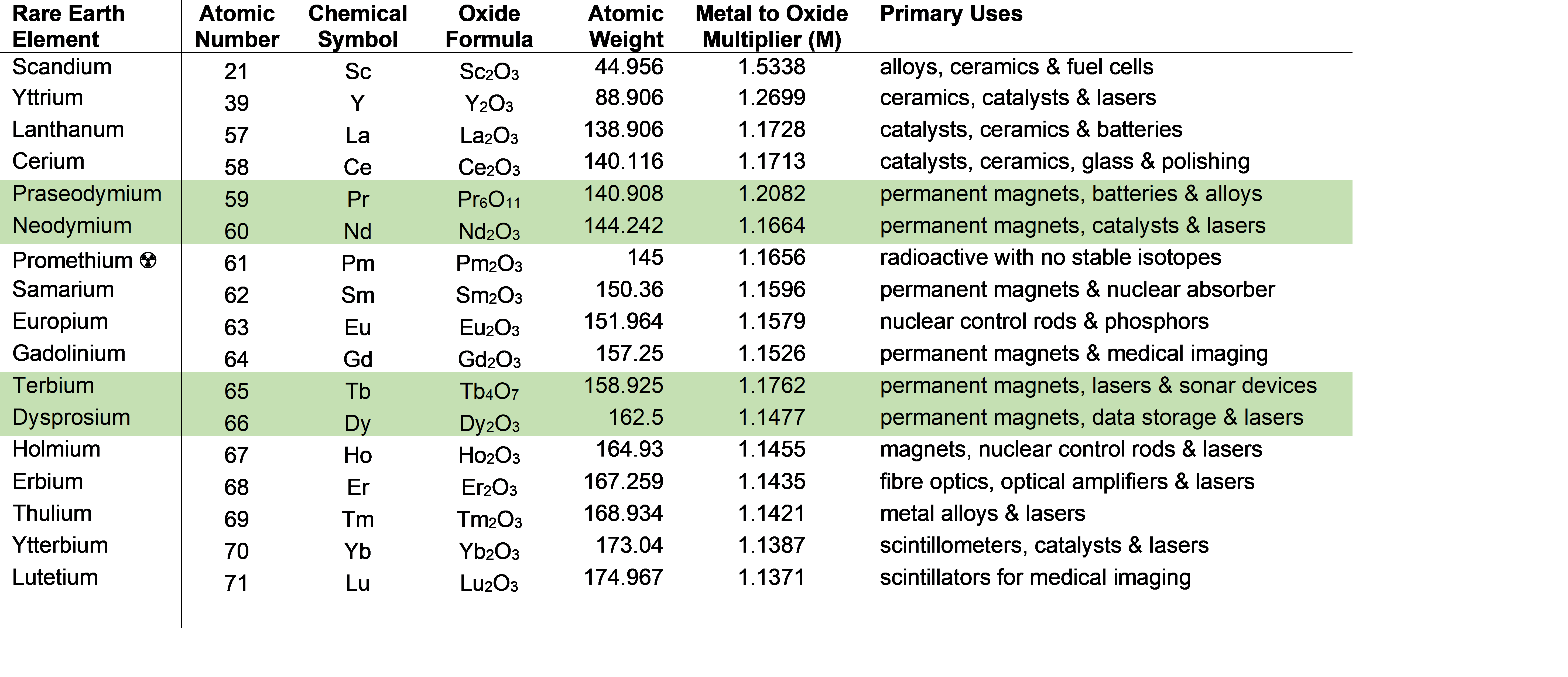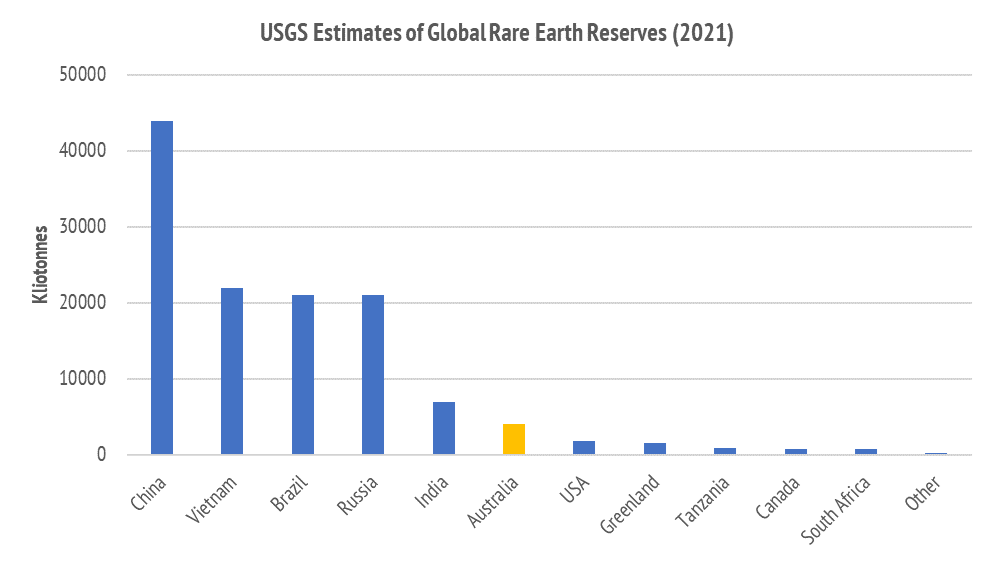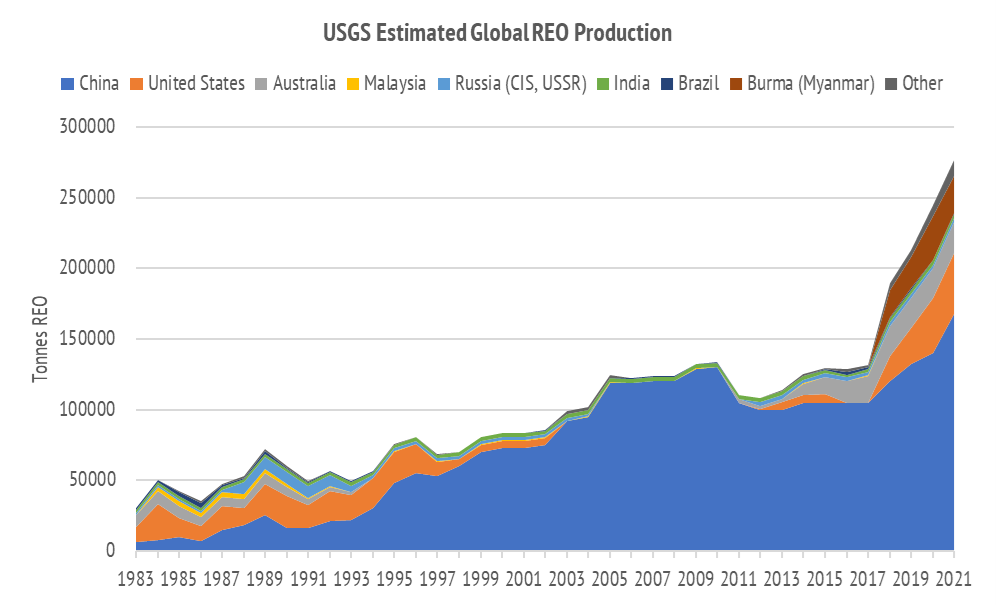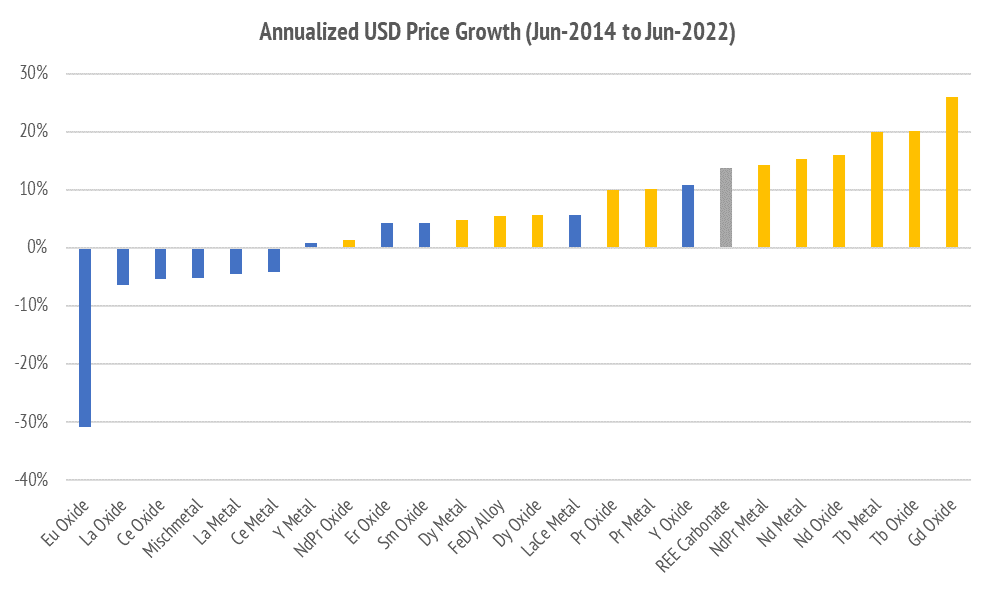What the heck is Terbium?
If you had 4,000 square kilometers of tenement package that is prospective for a metal that trades for around $2M per tonne, you might expect to have the phone run hot. That metal is Terbium, Chemical Symbol Tb, one of the Fab Four magnet Rare Earth metals. The phones that are running hot are at any of those explorers posting shows of Ion-Adsorption Clay hosted Rare Earth Elements. In this wire, we set the scene on these, and other emerging projects that will soon see Rare Earth mining and separation plants expand in Australia.

While the names of the underlying Rare Earth metals can seem almost comically peculiar, their significance to the energy transition is anything but. The key factor is magnets. These are used in the electric motors of electric vehicles, and in the generators used in wind turbines. While magnets are not new, the demand for rare earth permanent magnets is booming. This is due to the importance of two rare earth metals: Neodymium (Nd) and Praseodymium (Pr). When alloyed with ordinary Iron and Boron, these two metals work some special physical magic in creating very high magnetic field strengths, in a compact lightweight package.
Just a few kilograms of rare earth magnet are sufficient to provide the high strength fields that enable a Tesla to show such astonishing acceleration from its high torque electric motors.
Scale that up some to a massive multi-megawatt wind turbine, and you see upwards of one thousand kilograms or more, per wind turbine. Given that the two metals mentioned are now trading at over $100/kg, that soon adds up to a big economic opportunity.
To add further icing on this cake, two exotic metals Dysprosium (Dy) and Terbium (Tb) find a key role in making rare earth permanent magnets more resistant to degradation from excess heat, when operating for long periods of time. That demand is increasing due to the need to operate wind turbines continuously, or at least whenever there is a strong enough wind. That may well blow continuously for hours, if not days, and so high-temperature performance is absolutely essential.
Recognizing these facts, we have recently undertaken an extensive survey of the ASX-listed rare earth explorers, project developers, and producers. You can find that in the attached research note, which is free to download.
Here I will only summarize some key points.
Firstly, the competitive tension between China and the USA is particularly acute in the rare earth space, due to the dominance of China in mining of rare earths, but also in separation of rare earth ores into their component metals, and production of rare earth magnets. While China is mining somewhere between 60 and 70% of global rare earths, and dominates in available mineral reserves, they control as much as 90 to 95% of the downstream metals market and the manufacture of rare earth magnets.

The significance of this rare earth dominance has only increased in recent years as the boom in electric vehicles has driven much higher rates of global rare earth production.

The net effect of such demand acceleration has been to put upward pressure on the prices of those individually refined rare earths that are most in demand for magnets.

In the chart above, we show the magnet related rare earths in orange. Note that rare earths that are not used in magnets have generally been declining in price. However, the rare earth concentrates produced by most mines have kept pace with the more common magnet rare earths in Neodymium and Praseodymium. This is because rare earth refiners need to buy the unseparated concentrate in order to obtain the needed magnet materials.
In short, magnets are now driving the global market to feed the EV and wind turbine boom.
Fortunately, Australia has significant prospectivity for rare earths.
The ASX has seen a range of newly listed exploration companies plus a range of established project developers. Presently, there are five major companies that are either in production, such as Lynas Rare Earths (LYC) and lluka Resources (ILU), or at the late stages of settling offtake agreements, feasibility studies, financing and construction plans. The three firms that seem most likely to advance, at this stage, are Hastings Technology Metals (HAS), Arafura Limited (ARU) and Australian Strategic Materials (ASM).
While this area of the market is notoriously complex, due to the specialized nature of the minerals, the complexity of their separation, and the relatively opaque nature of the market, we think the underlying demand trends have firmed sufficiently that we ought to see this market go mainstream in the coming cycle.
The attached research report goes into more detail about this exciting area, including more discussion of the development state and prospects for the mentioned companies.
Simply download the article below for a table of currently active ASX listed rare earth miners and exploration companies, plus maps from Geosciences Australia showing the distribution of known Australian reserves, as at 31-Dec-2018, and some indicated areas of prospectivity that relate to the current exploration and development boom now underways.
Never miss an insight
Enjoy this wire? Hit the ‘like’ button to let us know. Stay up to date with my content by hitting the ‘follow’ button below and you’ll be notified every time I post a wire. Not already a Livewire member? Sign up today to get free access to investment ideas and strategies from Australia’s leading investors.
4 topics
5 stocks mentioned

